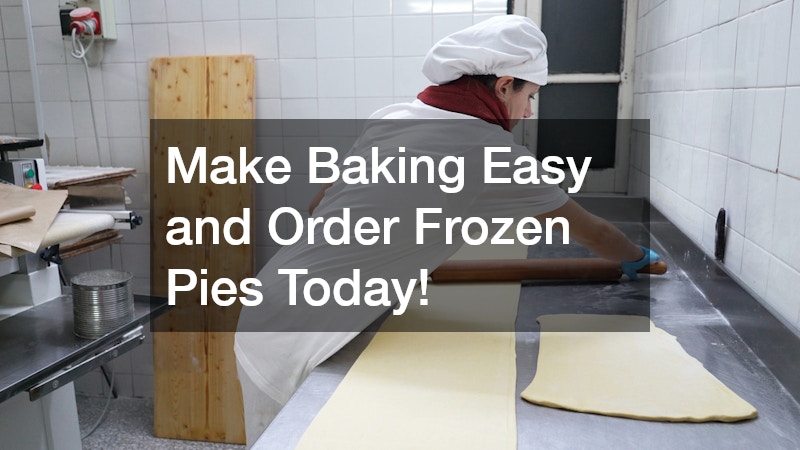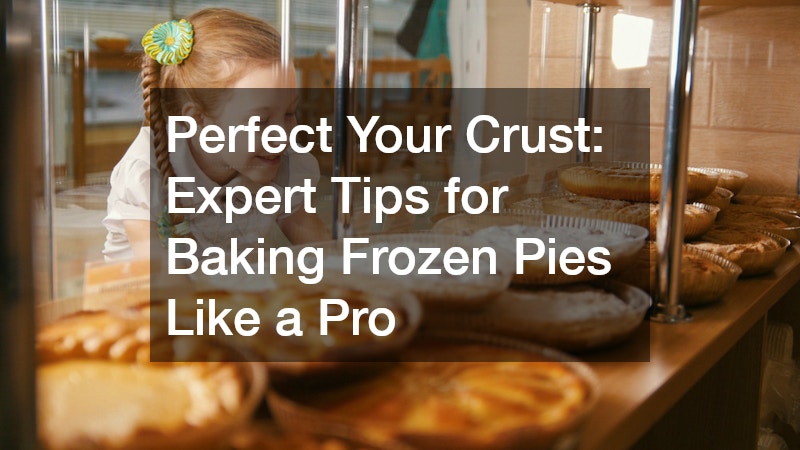Welcome to the ultimate guide on mastering the art of baking frozen pies. Whether you’re a novice or an experienced baker, these expert tips will help you achieve the perfect crust every time. Frozen pies offer convenience without sacrificing flavor, but getting that golden, flaky crust requires know-how. From preparation to oven settings, we’ll cover everything to elevate your frozen pies from good to great.
How to Prepare a Frozen Pie for Baking?
Preparing frozen pies correctly sets the foundation for a successful bake. Skipping or rushing this step can lead to uneven results or a soggy bottom.
Thawing the Pie Correctly
One of the most debated aspects of handling frozen pies is thawing. Contrary to intuition, experts recommend baking most frozen pies directly from the freezer to prevent the crust from absorbing excess moisture from the filling. Thawing can make the dough soft and prone to sogginess, especially in fruit-based frozen pies. If your frozen pie is pre-baked, like a pumpkin or lemon meringue variety, thaw it slowly in the refrigerator overnight. This method keeps the texture intact and avoids bacterial growth. For unbaked frozen pies, skip thawing altogether—simply unwrap and proceed. If you must thaw for any reason, do so in the fridge for 6-8 hours, never at room temperature, to maintain the integrity of your frozen pies.
Pre-baking Considerations
Before sliding your frozen pies into the oven, a few pre-baking steps are crucial. First, preheat your oven thoroughly— this ensures even heat distribution from the start. Place the frozen pie on a baking sheet to catch any drips and promote better airflow. For added crispiness, consider brushing the top crust with an egg wash right before baking; this will be detailed later. If your frozen pies have a foil pan, keep it in there, but for glass or ceramic, ensure it’s oven-safe. Double-check the pie for any plastic wrapping or labels that could melt. These preparations help your frozen pies bake uniformly.
Avoid Common Preparation Mistakes
Common pitfalls can ruin even the best frozen pies. The biggest mistake is thawing unbaked frozen pies before baking, which allows juices to seep into the crust, creating a gummy texture. Another error is overcrowding the oven; bake one or two frozen pies at a time for optimal heat circulation. Forgetting to vent the top crust with slits can cause steam buildup, leading to a burst or undercooked filling. Also, avoid placing frozen pies directly on the oven rack without a sheet—drips can cause smoke and mess. By sidestepping these, you’ll ensure your frozen pies turn out flawless.
What Temperature and Time Settings Are Best for Baking?
Oven settings are pivotal for baking frozen pies to perfection. The right temperature and timing prevent undercooking or burning.
Understanding Your Oven
Every oven is unique, so understanding yours is key when baking frozen pies. Convection ovens circulate heat more evenly, potentially reducing baking time by 25%. Standard ovens might have hot spots, so rotate your frozen pies midway. Preheat fully—aim for at least 15 minutes—to avoid temperature drops that could affect the crust. For accuracy, use an oven thermometer, as built-in ones can be off by 25 degrees. This knowledge ensures consistent results with frozen pies.
Choosing the Right Temperature
The ideal temperature for frozen pies varies by type. For fruit frozen pies, start high at 425°F for 20 minutes to set the crust, then reduce to 375°F. Savory frozen pies, like pot pies, do well at 375°F throughout. Avoid starting too low, as it can lead to a pale crust; too high risks burning the edges. For most frozen pies, 400°F is a safe middle ground initially. Adjust based on your oven’s behavior for the best outcome.
Timing Your Bake to Perfection
Timing frozen pies requires vigilance. Unbaked frozen pies typically need 60-90 minutes total: 20 minutes at high heat, then 40-60 minutes at a lower heat. Check for bubbling filling and a golden crust. Savory frozen pies might take 45-60 minutes at 375°F. Use a timer but rely on visual cues—insert a knife to test doneness. Overbaking dries out the filling, while underbaking leaves it raw. Perfect timing yields irresistible frozen pies.
How to Achieve a Golden, Flaky Crust?
The hallmark of great frozen pies is a golden, flaky crust. With these techniques, you’ll nail it every time.
Egg Wash and Glazing Techniques
An egg wash is essential for that shiny, golden finish on frozen pies. Whisk one egg with a tablespoon of water or milk, then brush lightly on the top crust before baking. For a deeper color, use just the yolk; for shine without much browning, opt for whites. Apply after the initial high-heat phase if needed. Sugar sprinkled on top adds sparkle and crunch. This simple step transforms ordinary frozen pies into professional-looking treats.
Baking Tools and Techniques
Essential tools elevate baking frozen pies. A pie shield protects edges from over-browning. Use a glass pie dish for even heating and to monitor the bottom crust. Blind-baking the bottom for 5-7 minutes at 350°F prevents sogginess in juicy frozen pies. Rolling pins and bench scrapers help when adjusting dough, but for store-bought frozen pies, focus on placement on the lower rack for crisp bottoms.
Troubleshooting Crust Issues
Soggy crusts plague many bakers of frozen pies. Combat this by baking on a preheated baking stone or lower rack. Uneven browning? Rotate the pie and use foil shields. If the top browns too fast, tent with foil. For toughness, ensure minimal handling pre-freeze. These fixes keep your frozen pies’ crusts impeccable.
Do You Need to Cover Your Pie During Baking?
Covering frozen pies strategically prevents issues while allowing proper browning.
When to Use Foil or Pie Shields
Use foil or pie shields on frozen pies when the edges brown faster than the center, typically after 20-30 minutes. For frozen fruit pies, shield from the start if your oven runs hot. Foil strips work well—crimp around edges. Remove 15-20 minutes before done to crisp up.
Balancing Shielding and Browning
Shielding protects without hindering browning on frozen pies. Cover only edges, leaving the top exposed for color. Monitor closely; over-shielding can result in pale crusts. Balance by shielding midway, ensuring even golden hues across your frozen pies.
Adjusting Mid-Bake Strategies
Mid-bake adjustments are vital for frozen pies. If bubbling too vigorously, lower the heat by 25°F. If under-browning, remove shields earlier. Peek without opening the door too often to maintain heat. These tweaks guarantee perfect frozen pies.
With these expert tips, you’re now ready to bake frozen pies like a pro, enjoying perfect crusts and delightful fillings every time.


